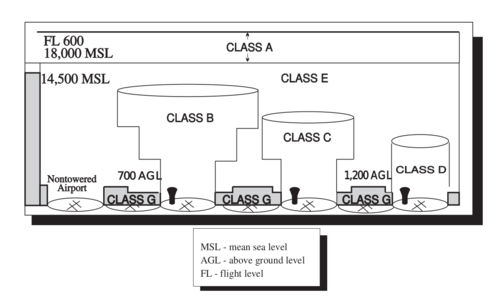The United States airspace system's classification scheme is intended to maximize pilot flexibility within acceptable levels of risk appropriate to the type of operation and traffic density within that class of airspace – in particular to provide separation and active control in areas of dense or high-speed flight operations.
The Albert Roper (1919-10-13 The Paris Convention) implementation of International Civil Aviation Organization (ICAO) airspace classes defines classes A through G (with the exception of class F which is not used in the United States). The other U.S. implementations are described below. The United States also defines categories of airspace that may overlap with classes of airspace. Classes of airspace are mutually exclusive. Thus, airspace can be "class E" and "restricted" at the same time, but it cannot be both "class E" and "class B" at the same location and at the same time.
Note: All airspace classes except class G require air traffic control (ATC) clearance for instrument flight rules (IFR) operations.

